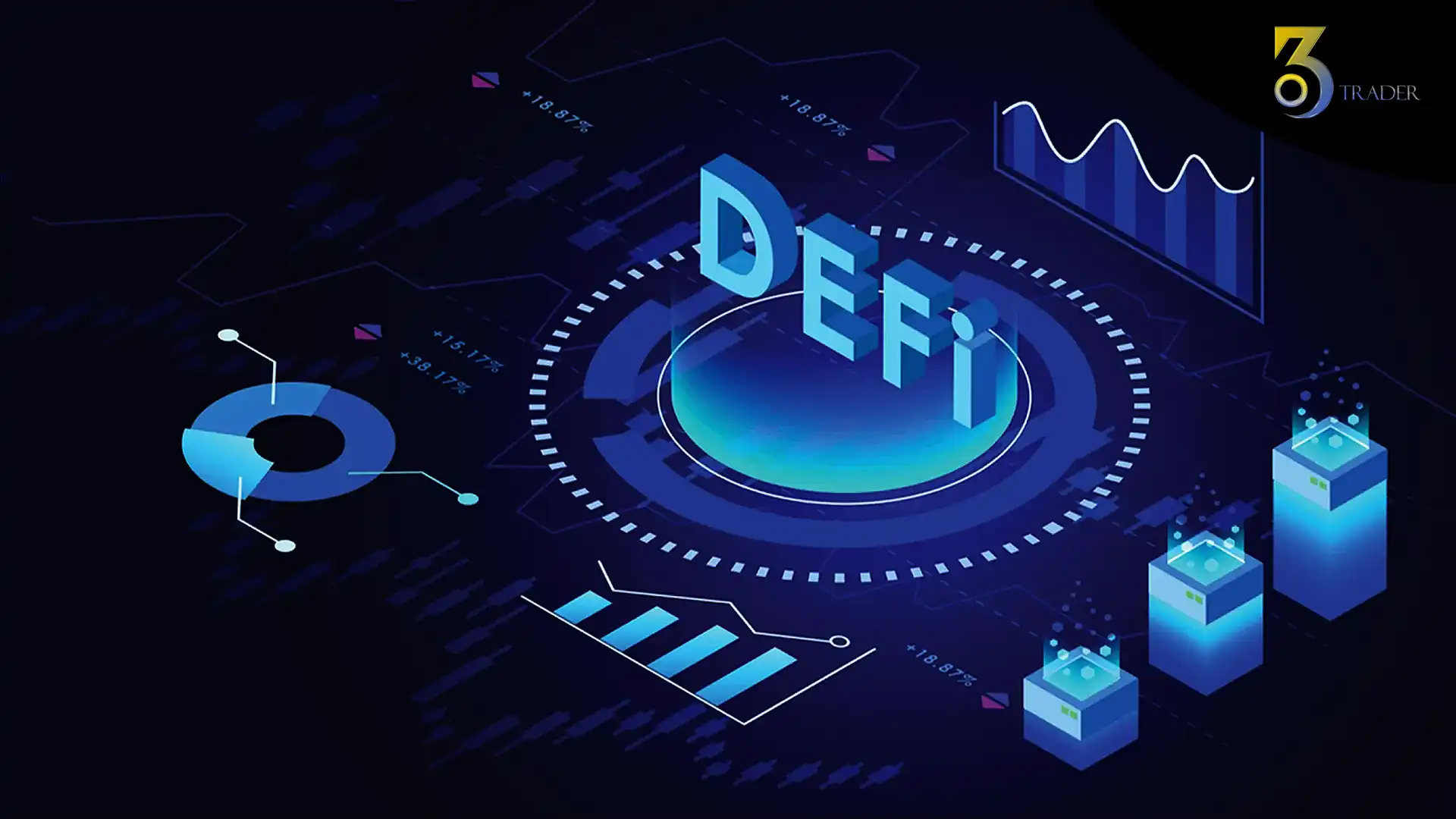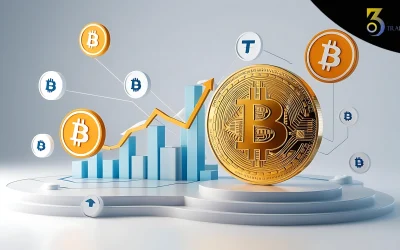Decentralized Finance, or DeFi, represents one of the most significant innovations in the financial sector, leveraging blockchain technology to create an open, permissionless financial ecosystem. DeFi allows users to access financial services such as lending, borrowing, trading, and investing without relying on traditional intermediaries like banks or financial institutions. As DeFi continues to evolve, it is poised to have a profound impact on the traditional banking system. This article explores the future of DeFi and how it may reshape the financial landscape.
What is Decentralized Finance (DeFi)?
DeFi refers to a collection of financial applications built on blockchain networks, particularly Ethereum, that operate without centralized control. These applications use smart contracts—self-executing contracts with the terms of the agreement directly written into code—to automate and enforce financial transactions. Unlike traditional financial systems, DeFi is open to anyone with an internet connection, providing greater accessibility and transparency.
Key Components of DeFi
DeFi encompasses a wide range of financial services and products, including:
- Decentralized Exchanges (DEXs): DEXs allow users to trade cryptocurrencies directly with one another without the need for a central authority. Examples include Uniswap and SushiSwap, which use automated market-making algorithms to facilitate trading.
- Lending and Borrowing Platforms: Platforms like Aave and Compound enable users to lend their cryptocurrencies to others in exchange for interest or borrow assets by providing collateral. These platforms operate without intermediaries, offering more favorable rates than traditional banks.
- Stablecoins: Stablecoins are cryptocurrencies pegged to the value of traditional currencies like the US dollar. They provide stability in the otherwise volatile crypto market and are often used in DeFi applications for trading and lending.
- Yield Farming and Staking: Yield farming involves providing liquidity to DeFi platforms in exchange for rewards, often in the form of additional tokens. Staking allows users to lock up their assets in a network to help validate transactions, earning rewards in return.
- Insurance: DeFi also includes decentralized insurance platforms like Nexus Mutual, which provide coverage for smart contract failures, hacks, and other risks without relying on traditional insurance companies.
The Future of DeFi
As DeFi continues to grow and mature, several trends and developments are likely to shape its future:
- Institutional Involvement: Institutional investors and traditional financial institutions are increasingly showing interest in DeFi. As these players enter the space, they may bring greater liquidity, stability, and credibility to DeFi markets. However, their involvement could also lead to a convergence between decentralized and centralized finance, potentially reshaping the original ethos of DeFi.
- Increased Adoption and Integration: DeFi is expected to see broader adoption as more individuals and institutions recognize its potential. Financial institutions may begin integrating DeFi services into their offerings, providing hybrid solutions that combine the benefits of decentralized and traditional finance.
- Interoperability and Cross-Chain Solutions: One of the challenges DeFi currently faces is the fragmentation across different blockchain networks. Future developments will likely focus on improving interoperability between blockchains, allowing assets and data to move seamlessly across networks. This will enhance the user experience and open up new possibilities for DeFi applications.
- Regulatory Developments: As DeFi grows, it will inevitably attract more regulatory scrutiny. Governments and regulators worldwide are grappling with how to approach DeFi, balancing innovation with the need to protect consumers and prevent illegal activities. The future of DeFi will be shaped by how these regulatory frameworks evolve.
- Improved Security and Risk Management: Security remains a significant concern in the DeFi space, with high-profile hacks and smart contract vulnerabilities occasionally making headlines. Future developments will focus on enhancing the security of DeFi platforms through better auditing practices, insurance solutions, and more robust smart contract development.
- User Experience and Accessibility: For DeFi to achieve mainstream adoption, user experience and accessibility must improve. Currently, DeFi platforms can be complex and intimidating for newcomers. Simplifying the onboarding process and improving the user interface will be crucial for attracting a broader audience.
Impact of DeFi on Traditional Banking
The rise of DeFi poses both challenges and opportunities for the traditional banking system. Here’s how DeFi could impact traditional banking in the coming years:
- Redefining Trust: Trust has traditionally been a cornerstone of the banking system, with customers relying on banks to safeguard their money and execute transactions. DeFi challenges this notion by offering trustless systems where transactions are governed by code rather than institutions. This shift could lead to a reevaluation of how trust is built and maintained in the financial industry.
- Disintermediation: One of the most significant impacts of DeFi on traditional banking is disintermediation—the removal of intermediaries from financial transactions. By eliminating the need for banks and financial institutions as middlemen, DeFi can reduce costs and increase efficiency in financial services. This could lead to a decline in the demand for traditional banking services, particularly in areas like lending, borrowing, and asset management.
- Increased Competition: DeFi presents a new form of competition for traditional banks, particularly in the areas of lending, payments, and wealth management. With DeFi platforms offering potentially higher returns and lower fees, banks may need to innovate and adapt to remain competitive. This could lead to the development of new products and services that blend the advantages of both centralized and decentralized finance.
- Evolution of Financial Products: Traditional banks may begin to offer DeFi-based products to their customers, such as tokenized assets, decentralized lending services, or yield-bearing accounts. This could lead to the emergence of hybrid financial products that combine the stability and trust of traditional banking with the innovation and accessibility of DeFi.
- Regulatory Challenges: As DeFi grows, traditional banks will face new regulatory challenges. Banks are heavily regulated entities, and integrating DeFi services could complicate compliance with existing laws. Additionally, banks may lobby for stricter regulations on DeFi to protect their market share, leading to a complex regulatory landscape that both traditional and decentralized financial services will need to navigate.
- Financial Inclusion: DeFi has the potential to enhance financial inclusion by providing access to financial services for individuals who are unbanked or underbanked. Traditional banks may see this as both a challenge and an opportunity. By embracing DeFi technologies, banks could reach new markets and customer segments that were previously inaccessible.
Conclusion
The future of DeFi is bright, with the potential to revolutionize the financial sector by making it more accessible, transparent, and efficient. However, its rise will inevitably have a profound impact on traditional banking, challenging the status quo and forcing banks to innovate and adapt. As DeFi and traditional finance continue to evolve, the lines between them may blur, leading to a new era of financial services that combine the strengths of both systems. Whether through competition or collaboration, the relationship between DeFi and traditional banking will shape the future of the global financial landscape.




